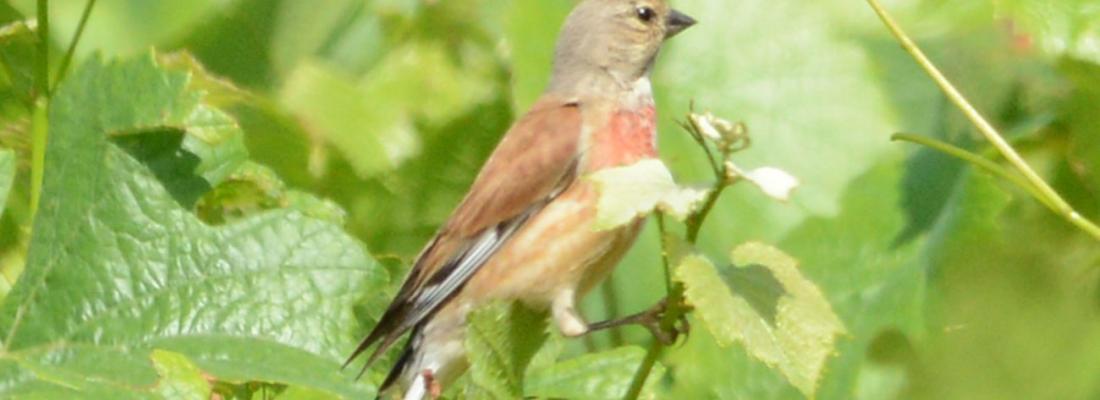Biodiversity Reading time 2 min
Combining agroecological practices to sustain bird communities in vineyards
Published on 11 May 2021

Photo: Common linet
Like all crops, viticulture relies on many services provided by the biodiversity present in vineyards. Birds are an essential component of this biodiversity as they regulate insect pests and weed seeds by eating them1. In addition, they are historically and culturally important, for their songs and the variety of sounds they provide to vineyard landscapes and local inhabitants. The intensification of viticulture and the homogenisation of vineyard landscapes have led to a decline in these bird communities2 and their conservation has become a major issue in Europe. Given the need to transition to sustainable agriculture, more and more winegrowers are turning to agroecological practices, including those required to obtain organic farming certification (excluding the use of synthetic fertilisers and pesticides, for example), the preservation of semi-natural habitats (hedgerows, shrublands, permanent grasslands, etc.) and non-intervention in these habitats (no mowing or pruning, for example) during nesting periods. However, the effects of combining these practices on the composition of bird communities had never been studied on a broad geographical scale.
The researchers therefore studied the bird communities of 334 vineyards, 30% of which were organically managed, in 12 European wine-growing regions with contrasting climates and landscapes. These regions include southern Catalonia in Spain, Occitanie, Nouvelle-Aquitaine, Bourgogne-Franche Comté and Pays de la Loire in France, as well as northern Italy (Oltrèpo and Trentino). They identified the bird species present in each vineyard and counted the singing individuals of each species to analyse the diversity of each community and the ecological functions and services it could provide. For example, the presence of insectivore species such as tits, or seed eating species such as buntings, are a valuable aid to winegrowers as they can help regulate pests and weeds. On the contrary, the presence of grape-eating birds can be problematic.
The international team counted nearly 11,500 birds belonging to 131 species, including endangered species such as the Ortolan Bunting and the Little Bustard. The results of the study show that the abundance of bird species depends on combinations of practices that vary according to species characteristics. Organic winegrowing practices contribute to the abundance of insectivore birds and to the diversity of bird communities; but this effect is enhanced by grass cover in vine inter-rows and by the diversity of the landscape. Furthermore, a high proportion of woodland cover in the landscape favours the abundance of insectivores and bird species with attractive songs. On the other hand, this environment is less favourable to seed-eating bird species and open-habitat specialists, which prefer a high proportion of vines in the landscape.
The results of this study clearly illustrate that the transition of winegrowing to sustainable systems that respect biodiversity must rely on several levers: the promotion of organic winegrowing but also other agroecological practices such as grass cover in vine inter-rows and the preservation of landscape diversity by simultaneously promoting the presence of forests, hedges, meadows as well as crops other than vines.
|
Reference Luc Barbaro, Giacomo Assandri, Mattia Brambilla, Bastien Castagneyrol, Jérémy Froidevaux, Brice Giffard, Joséphine Pithon, Xavier Puig-Montserrat, Ignasi Torre, François Calatayud, Pierre Gaüzère, Josépha Guenser, Francesc-Xavier Macià-Valverde, Séverine Mary, Laurent Raiso, Clélia Sirami, Adrien Rusch, Organic management and landscape heterogeneity combine to sustain multifunctional bird communities in European vineyards, Journal of Applied Ecology 2021;00:1– 11 DOI: https://doi.org/10.1111/1365-2664.13885 |
1 In agriculture, weeds are plants that grow in an area without being intentionally placed there, and that may have negative effects on agricultural productivity.
2 Hendershot et al. Intensive farming drives long-term shifts in avian community composition. Nature, 579(7799), 393–396. doi: 10.1038/s41586-020-2090-6
